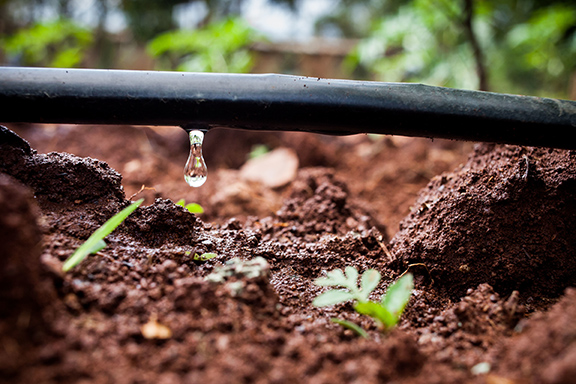It’s officially summer! Like every year, summer is sure to bring us hot, drought climates. These hot, dry conditions can bring on challenges for your landscape. On one hand your landscape is your business’s first impression. Keeping your lawn and plants looking rejuvenated is important to your business’s reputation. On the other hand, we must do our part to help eliminate wasteful outdoor water usage while conserving water.
Over half of all water use in the summer is outdoors on landscaping. So how do we find that balance between saving water and presenting a well-manicured landscape? Below we’ve listed 5 ways you can be diligent in your water usage while keeping your landscaping well-kept.
Zoning. If you are designing a new landscape, or looking to redesign your existing landscape, it’s important to strategize your design around the regions climate and zones. One way to do this is to be aware of and map out zones that are hot and sunny, cool and shady, and moist or dry. Planning according to light exposure and your site’s natural conditions will significantly reduce water usage and allow your plants to flourish.
Plant selection and placement. In addition to mapping out zones in your landscape, plant selection also plays a key role in your water usage.  One of the biggest benefits of using native plants is that they have adapted to the soil and climatic conditions, making them require little water beyond rainfall. Planting exotic species may require more water.
One of the biggest benefits of using native plants is that they have adapted to the soil and climatic conditions, making them require little water beyond rainfall. Planting exotic species may require more water.
Just important as where you plant is what you plant. Just like people, not all plants are the same. Different plants require different watering needs. Grouping plants with similar water needs together into specific “hydrozones” (placement of plants together by like water needs) is another great way to reduce water usage. Doing this helps to protect plants from under and overwatering.
Mulching. Like we’ve talked about before, one of the benefits mulch has to offer is water preservation. Mulch creates a barrier to prevent the soil from drying up and crusting, minimizing evaporation from the soil. Mulch also reduces number of weeds in your beds. This is important to water conservation as weeds compete with plants for available soil moisture.
Watering. Contrary to popular belief, watering your plants deeply less frequently is ideal. Once a week deep, slow waterings allows the soil to absorb the  moisture without creating runoff or puddling. A deep watering early in the morning will help avoid evaporation and burning up of the plants from the sun. Be careful not to water when it’s windy, rainy or extremely hot, as this leads to wasteful watering.
moisture without creating runoff or puddling. A deep watering early in the morning will help avoid evaporation and burning up of the plants from the sun. Be careful not to water when it’s windy, rainy or extremely hot, as this leads to wasteful watering.
Irrigation systems, such as drip (aka trickle) irrigation and soaker hoses (canvas/rubber hose with perforations), are another great way to effectively water vegetation in moisture-zoned areas in
your landscape. Drip irrigation efficiently delivers small quantities of water at low pressure directly to the root of plants. A soaker hose is most effective when it lies on top or slightly below soil level and mulch is placed on top.
Save Water, Save The Environment
We can help you by providing affordable, sustainable irrigation solutions. Give us a call at 314-770-2828 or use our simple contact form to discuss your water management needs.




